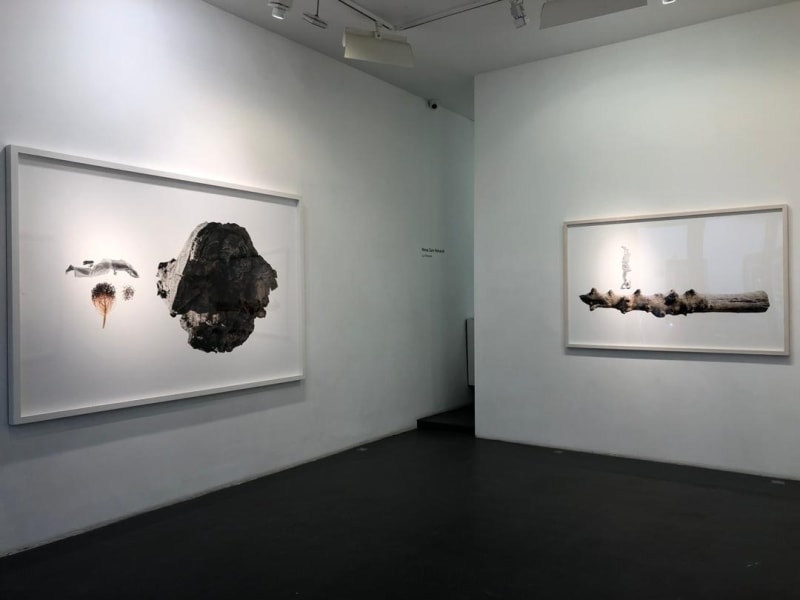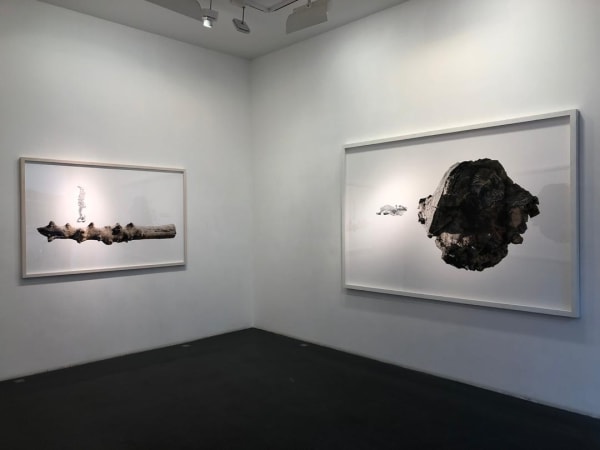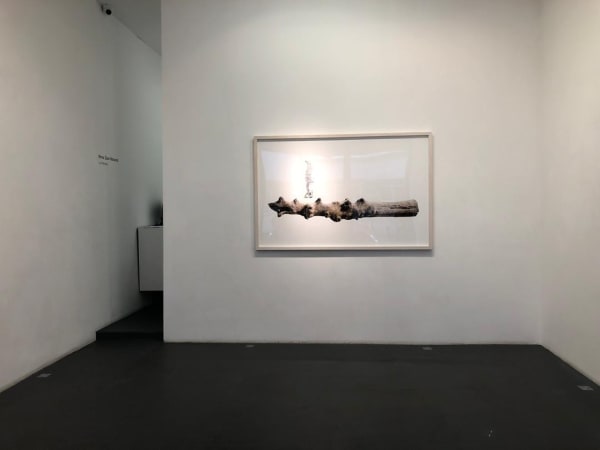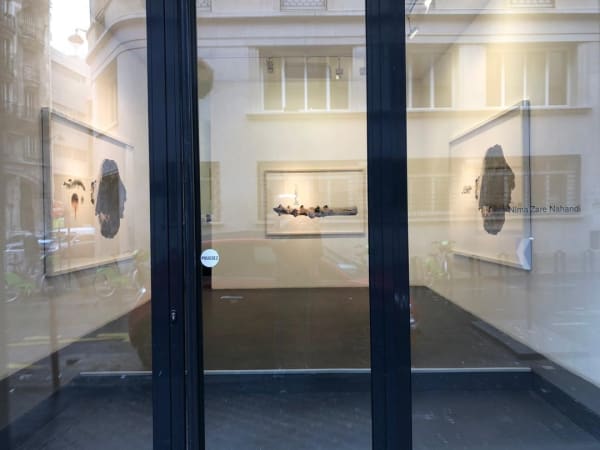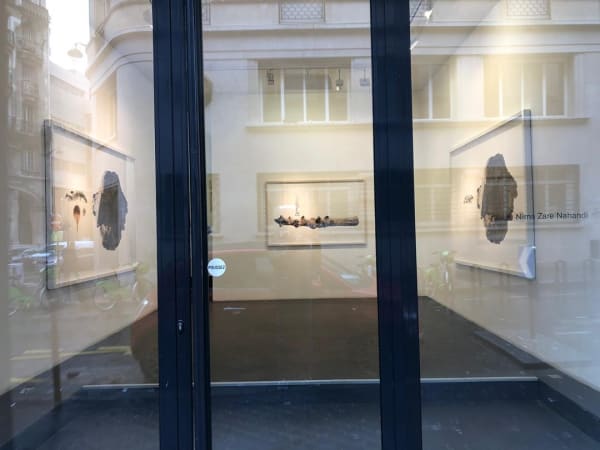Nima Zaare Nahandi | "Le Premier": Galerie Nathalie Obadia
A solo presentation of works by Nima Zaare Nahandi
-
 Installation View of Le Premier a solo presentation of works by Nima Zaare Nahandi.
Installation View of Le Premier a solo presentation of works by Nima Zaare Nahandi. -
 Installation View of Le Premier a solo presentation of works by Nima Zaare Nahandi.
Installation View of Le Premier a solo presentation of works by Nima Zaare Nahandi. -
 Installation View of Le Premier a solo presentation of works by Nima Zaare Nahandi.
Installation View of Le Premier a solo presentation of works by Nima Zaare Nahandi. -
 Installation View of Le Premier a solo presentation of works by Nima Zaare Nahandi.
Installation View of Le Premier a solo presentation of works by Nima Zaare Nahandi. -
 Installation View of Le Premier a solo presentation of works by Nima Zaare Nahandi.
Installation View of Le Premier a solo presentation of works by Nima Zaare Nahandi. -
 Installation View of Le Premier a solo presentation of works by Nima Zaare Nahandi.
Installation View of Le Premier a solo presentation of works by Nima Zaare Nahandi. -
 Installation View of Le Premier a solo presentation of works by Nima Zaare Nahandi.
Installation View of Le Premier a solo presentation of works by Nima Zaare Nahandi.
Galerie Nathalie Obadia is very pleased to present the first exhibition in France of Iranian artist Nima Zaare Nahandi, born in Tehran, Iran in 1983. After studying pure mathematics at the University of Tehran, Nima Zaare Nahandi focused on his artistic practice and graduated from the Ecole Nationale des Beaux Arts de Paris in 2010. During his residency at Casa de Velasquez in Madrid (2010-2012), he developed a precise technique, oriented on the finesse of detail. The approach of his subjects evolves with time, as the final rendering is visible only after a couple months of work.
This series articulates in a schematic manner the essential moments in the evolution of human cognitive capacities; or his fundamental aptitudes such as abstraction, language and the creation of culture. The visual elements refer to essential notions that arise over the course of this narrative. The first image of the series depicts the moment when a human being enters a territory and appropriates it. He is perceived in a thinking position meditating in order to have an effect on the environment. This image is composed of two visual elements that refer to the key concepts of «common ancestor» and «territory».
« ... words become general, by being made the signs of general ideas; and ideas become general, by separating from them the circumstances of time, and place and any other ideas, that may determine them to this or that particular existence. By this way of abstraction they are made capable of representing more individuals than one. Each of which, having in it a conformity to that abstract idea, is (as we call it) of that sort.»1
Starting with the linguistic reference of the word «human» that relates to the universal notion of humans without any particular association to a specific culture, ethnicity or geography, the figure represents the concept of the «common ancestor», the notion that exists in any group of humans wether a tribe or a large group of societies, that share the same cosmic ideology. Each group defines a common ancestor who has generated them as well their culture and their ways of doing things. He is their archetype and their prototype. The artist cites an example of the narrative of a common ancestor from the Baruya tribe taken from the title «Au Fondements des Sociétés Humaines» from Maurice Godelier:
« ... I am the central pole of this house, you are under me, I am the first and all your first names from now on, will be mine, Baruya.»
The figure in the series «Le premier» is the theoretical and generalized representative of the notion of common ancestor, as it recurs in most human groups. He is depicted with his lower body covered in reference to the « sexual taboo», the common cultural trait which is at the origin of the organization and social order of many societies. The clothing symbolizes this common feature common to the majority of cultures « a control on the bodies in the societies and which introduces a morality»2.
The other visual element, the tree trunk, embodies the notions relative to space and time: «territory» and «measure of time». This thousand- year-old tree, represents a materialized manifestation of time. It functions as a metaphorical bar of a fraction of time. Its placement in the invisible ground( the white paper), designates an abstract notion of territory.
«... We primarily claim the appropriation of a portion of nature. In other words a territorial group becomes a 'society' when a certain number of groups and individuals claim to reproduce together on the same territory...»3
The trunk is a sort of witness to le premier's course of evolution. The plants populated the surface of the primordial earth, serving as a cradle for humanity by housing the first humans and by witnessing the formation of the elementary structures of their societies. Seen from the profile angle, the trunk recalls the Big Bang diagram which illustrates the dilution of the universe in a space-time axis. Therefore the displacement of an imaginary surface along the trunk's axis corresponds to different moments of the figures evolutionary stages.
The second image of the series, «Réarrangement», symbolically reflects on the agricultural revolution and its consequence: the birth of culture. The adoption of agriculture is linked with the emergence of aesthetic activities, permitted by the freeing of time due to increased agricultural productivity. All the mental faculties are engaged in the cultural process4. Culture which is the result of mental procedures engaging language, memory, reason and imagination will have as a consequence the reorganization of the environment: the nature. Henceforth, the cultural selection is added to natural selection to transmit ideas and practices by means of language.
The date palm is one of the plants for which humans participate in the pollination, to ensure a process that is wind-dependent. By the symbolic act of separating the dates from the bunches, «le premier» plans and modifies the natural trajectory that a date would follow without human intervention. This gesture will also have the consequence of an ethic for the ground and the way it is shared out amongst humans. The cultivation of the earth gives an order to the flora's reproduction and sexuality, which evokes the way in which humans organize their own societies according to their sexual relations and kinship.
« If nature leaves marriage to chance and to the arbitrary, it is impossible for culture not to introduce some sort of order where there is none. The prime role of culture is to ensure the group's existence as a group, and consequently, in this domain as in all others, to replace chance withorganization.»5
In this image a profile of le premier's face is seen with an emphasis on his gaze which refers to his visual analysis; the primary source of knowledge.
The tree trunk has been photographed at different times of year from the same vantage point. Slight fluctuations of light are visible in each image. This choice reflects the relative immobility of plants compared to human and animal mobility.
«The plant does not cross through the space... . It doesn't come to the human... . It is there : witness, suggestion, proposition, patient offer.» Pierre Leiutaghi, La plante compagne.
1 John Locke, Essay on Human Understanding.
2 Maurice Godelier, Au Fondement des Sociétés Humaines.
3 Maurice Godelier, Au Fondement des Sociétés Humaines. (La famille et la parenté).
4 Antonio Damasio, The Strange Order of Things.
5 Claude Lévi-Strauss, Elementary Structures of Kinship.
